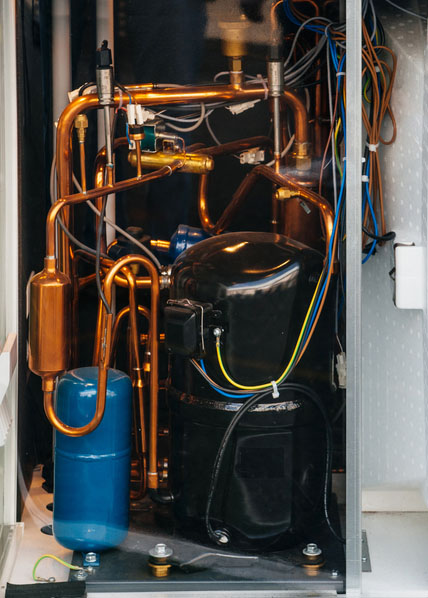Background
A number of serious incidents have resulted in workers being severely burnt when a mixture of refrigerant and compressor oil was expelled and ignited while servicing air conditioning refrigerant systems.
The refrigerant systems contained a non-flammable refrigerant, R22, but when mixed with oil, was ignited by an oxy-acetylene torch used by the workers’ to unsweat the copper fittings, when replacing the refrigerant compressor.
It's believed residual pressure in the system caused the refrigerant and oil to be released from the pipe joint, which contacted an ignition source and started a flash fire.
Observations
Oxy-acetylene torches are commonly used to unsweat copper fittings. This plumbing practice can be extremely hazardous and unsafe unless appropriate control measures are taken.
It should be noted that:
- Refrigerant will remain in solution with compressor oil unless the refrigerant is completely recovered using a reclaim unit. This process may take a significant time depending on the size and design of the system.
- Warming or agitating the system will cause the refrigerant to evaporate, resulting in a rise in pressure.
- Attempting to break into a system before all residual refrigerant has been removed can cause a sudden release of refrigerant and oil mist, which will be flammable.
- Heat from a naked flame will likely result in ignition of any expelled refrigerant and oil mist, and can cause trace amounts of refrigerant to decompose and generate highly toxic fumes.
Action required
Review your current procedures and ensure safe working practices include:
- reclaiming the refrigerant before breaking into the system
- ensuring the work area is well ventilated
- using pipe cutters or similar to cut the pipe
The use of an oxy-acetylene torch or similar to unsweat pipe joints should only be carried out as a last resort and under very strict and controlled conditions.
If oxy-acetylene torch or similar is used, it is recommended that:
- the relevant requirements of the Welding processes code of practice and AS 1674.1 Safety in welding and allied processes are complied with
- the system is purged with dry nitrogen following full recovery of the refrigerant
- adequate ventilation is provided to remove hazardous gases
- appropriate personal protective equipment and fire protection equipment is used.
Notify us of any incidents where persons are exposed to a serious risk associated with an uncontrolled fire.

Typical refrigerant system
Back to top